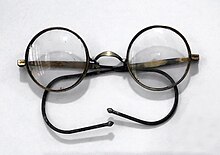
Julius Henry "Groucho" Marx was an American comedian, actor, writer, and singer who performed in film, television, radio, stage, and vaudeville. He was a master of quick wit and is generally considered to have been one of America's greatest comedians.

A lens is a transmissive optical device that focuses or disperses a light beam by means of refraction. A simple lens consists of a single piece of transparent material, while a compound lens consists of several simple lenses (elements), usually arranged along a common axis. Lenses are made from materials such as glass or plastic and are ground, polished, or molded to the required shape. A lens can focus light to form an image, unlike a prism, which refracts light without focusing. Devices that similarly focus or disperse waves and radiation other than visible light are also called "lenses", such as microwave lenses, electron lenses, acoustic lenses, or explosive lenses.

A corrective lens is a transmissive optical device that is worn on the eye to improve visual perception. The most common use is to treat refractive errors: myopia, hypermetropia, astigmatism, and presbyopia. Glasses or "spectacles" are worn on the face a short distance in front of the eye. Contact lenses are worn directly on the surface of the eye. Intraocular lenses are surgically implanted most commonly after cataract removal but can be used for purely refractive purposes.

Glasses, also known as eyeglasses or spectacles, are vision eyewear with clear or tinted lenses mounted in a frame that holds them in front of a person's eyes, typically utilizing a bridge over the nose and hinged arms, known as temples or temple pieces, that rest over the ears.

Sunglasses or sun glasses are a form of protective eyewear designed primarily to prevent bright sunlight and high-energy visible light from damaging or discomforting the eyes. They can sometimes also function as a visual aid, as variously termed spectacles or glasses exist, featuring lenses that are colored, polarized or darkened. In the early 20th century, they were also known as sun cheaters.

A monocle is a type of corrective lens used to correct or enhance the visual perception in only one eye. It consists of a circular lens placed in front of the eye and held in place by the eye socket itself. Often, to avoid losing the monocle, a string or wire is connected to the wearer's clothing at one end and, at the other end, to either a hole in the lens or, more often, a wire ring around its circumference.

Ray-Ban is a brand of luxury sunglasses and eyeglasses created in 1936 by Bausch & Lomb. The brand is best known for its Wayfarer and Aviator lines of sunglasses. In 1999, Bausch & Lomb sold the brand to Italian eyewear conglomerate Luxottica Group for a reported $640 million.
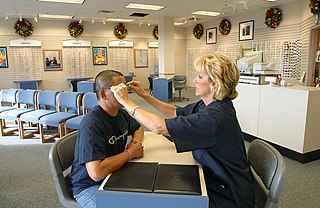
An optician is an individual who fits eyeglasses or contact lenses by filling a refractive prescription from an optometrist or ophthalmologist. They are able to translate and adapt ophthalmic prescriptions, dispense products, and work with accessories. There are several specialties within the field.
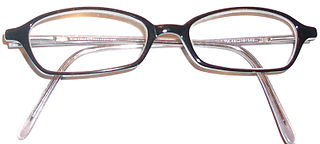
Horn-rimmed glasses are a type of eyeglasses. Originally made out of either horn or tortoise shell, for most of their history they have actually been constructed out of thick plastics designed to imitate those materials. They are characterized by their bold appearance on the wearer's face, in contrast to metal frames, which appear less pronounced.

Essilor International is an international ophthalmic optics company that designs, manufactures and markets lenses to correct or protect eyesight. Its headquarters is in Charenton-le-Pont, France.

Aviator sunglasses are a style of sunglasses that was developed by a group of American firms. The original Bausch & Lomb design is now commercially marketed as Ray-Ban Aviators, although other manufacturers also produce aviator-style sunglasses.

Eyewear is a term used to refer to all devices worn over both of a person's eyes, or occasionally a single eye, for one or more of a variety of purposes. Though historically used for vision improvement and correction, eyewear has also evolved into eye protection, for fashion and aesthetic purposes, and starting in the late 20th century, computers and virtual reality.

GI glasses are eyeglasses issued by the American military to its service members. Dysphemisms for them include the most common "birth control glasses" (BCGs) and other variants. At one time, they were officially designated as regulation prescription glasses (RPGs). This was commonly said to mean "rape prevention glasses" due to their unstylish appearance. At times in the US Navy they were called to "Standard Navy Ugly Glasses" (SNUGs). Similar glasses can be issued to inmates in state and federal prisons.

Browline glasses are a style of eyeglass frames where the "bold" upper part holding the lenses resembles eyebrows framing the eyes. They were very popular during the 1950s and 1960s, especially in the United States of America. The glasses were first manufactured by Shuron Ltd in 1947 under the "Ronsir" brand, and quickly emulated by various other manufacturers. The design became the most common style of eyeglasses throughout the 1950s and the early 1960s before it was surpassed in popularity by solid plastic styles. Browlines enjoyed a renaissance as sunglasses in the 1980s before returning to popularity in the 2010s, with the rise of retro style and the hipster subculture. Chinese Premier Li Peng wore browline eyeglasses for 30 years from 1989 until his death in 2019.i

Cat eye glasses are a shape of eyewear. The form is closely related to the browline style, differentiated by having an upsweep at the outer edges where the temples or arms join the frame front. Cat-eye glasses were popular in the 1950s and 1960s among women and are often associated with the Beehive hairstyle and other looks of the period. They preceded the large bug-eye glasses of the 1970s, 1980s, and 1990s.
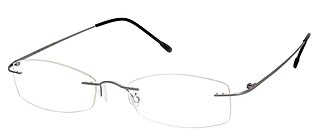
Rimless eyeglasses are a type of eyeglasses in which the lenses are mounted directly to the bridge or temples. The style is divided into two subtypes: three-piece glasses are composed of lenses mounted to a bridge and two separate temple arms, while rimways feature a supporting arch that connects the temples to the bridge and provides extra stability for the lenses.
Cutler and Gross is a British luxury eyewear brand, founded by Graham Cutler and Tony Gross in 1969. It is based in the Knightsbridge area of London.
Randolph Engineering, Inc. is an American manufacturer of sunglasses, shooting glasses, and prescription glasses. Located in Randolph, Massachusetts, it is also the prime contractor for providing aviator sunglasses to the United States military.
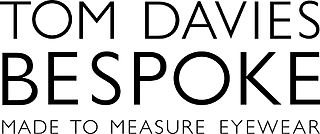
TD Tom Davies is a British handmade eyewear brand, founded by Tom Davies in 2002. TD Tom Davies offers a bespoke service on all frames of their collections. Its headquarters is in West London.
The American Optical Company, also known as AO Eyewear, is a luxury American eyewear and sunglass company based in Vernon Hills, Illinois near Chicago. AO designs and manufactures in the United States.
